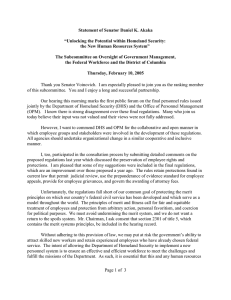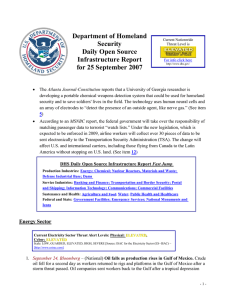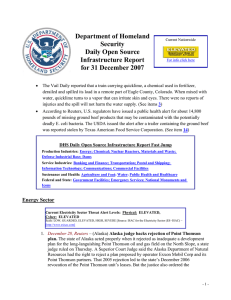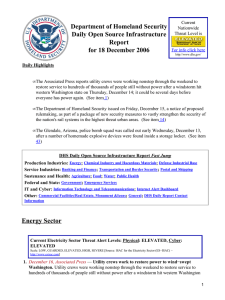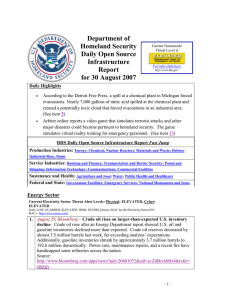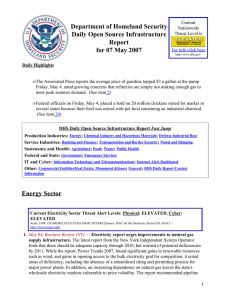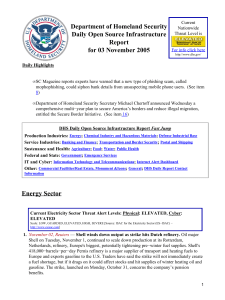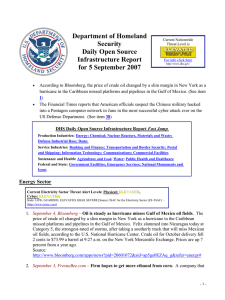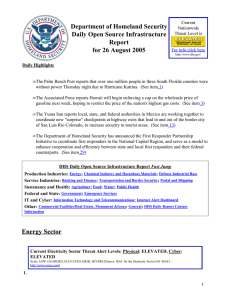Scientist, UK 08-10-06 U.S. shortens list of bio-agro applicants
advertisement
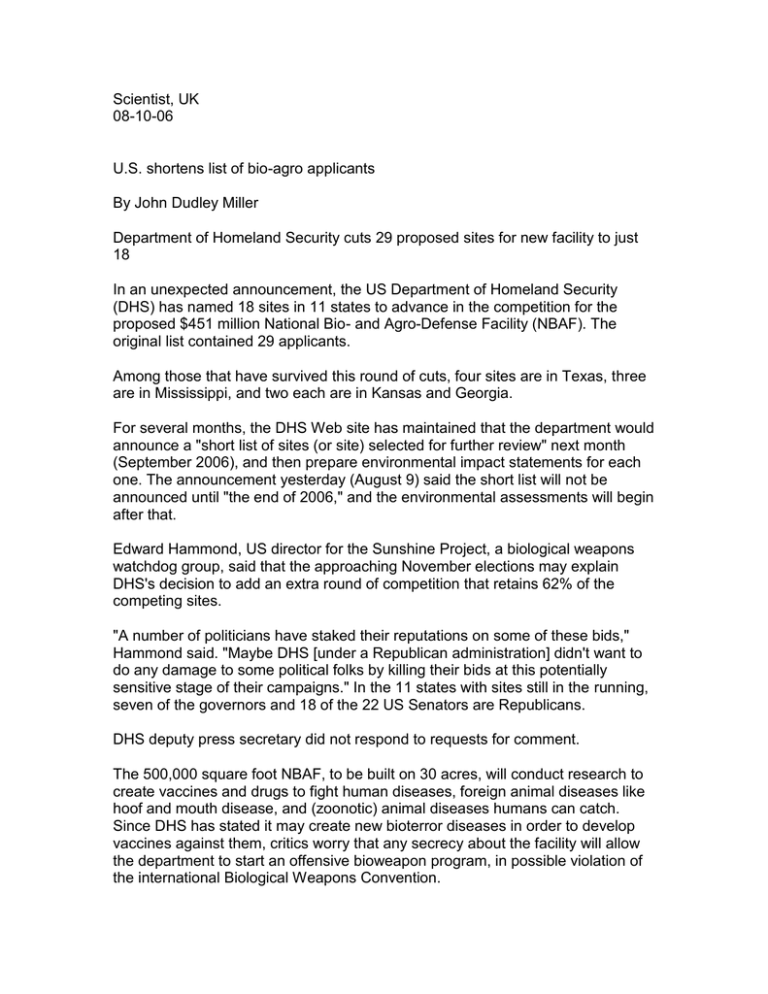
Scientist, UK 08-10-06 U.S. shortens list of bio-agro applicants By John Dudley Miller Department of Homeland Security cuts 29 proposed sites for new facility to just 18 In an unexpected announcement, the US Department of Homeland Security (DHS) has named 18 sites in 11 states to advance in the competition for the proposed $451 million National Bio- and Agro-Defense Facility (NBAF). The original list contained 29 applicants. Among those that have survived this round of cuts, four sites are in Texas, three are in Mississippi, and two each are in Kansas and Georgia. For several months, the DHS Web site has maintained that the department would announce a "short list of sites (or site) selected for further review" next month (September 2006), and then prepare environmental impact statements for each one. The announcement yesterday (August 9) said the short list will not be announced until "the end of 2006," and the environmental assessments will begin after that. Edward Hammond, US director for the Sunshine Project, a biological weapons watchdog group, said that the approaching November elections may explain DHS's decision to add an extra round of competition that retains 62% of the competing sites. "A number of politicians have staked their reputations on some of these bids," Hammond said. "Maybe DHS [under a Republican administration] didn't want to do any damage to some political folks by killing their bids at this potentially sensitive stage of their campaigns." In the 11 states with sites still in the running, seven of the governors and 18 of the 22 US Senators are Republicans. DHS deputy press secretary did not respond to requests for comment. The 500,000 square foot NBAF, to be built on 30 acres, will conduct research to create vaccines and drugs to fight human diseases, foreign animal diseases like hoof and mouth disease, and (zoonotic) animal diseases humans can catch. Since DHS has stated it may create new bioterror diseases in order to develop vaccines against them, critics worry that any secrecy about the facility will allow the department to start an offensive bioweapon program, in possible violation of the international Biological Weapons Convention. The new facility will take over the research programs of the Plum Island Animal Disease Center on Long Island, a 55-year old aging facility that will soon undergo a $35 million upgrade to keep it open at least until the NBAF begins operating in 2013. One surprising omission from the list of the 18 remaining sites is Iowa State University. Near the school is the US Department of Agriculture's National Animal Disease Center, which employs 250 people, Carol Moran, the location administrator, told The Scientist. The university operates its own large, wellrespected animal research program. "I can't imagine what the differentiating features would be that would have excluded it," said Harley Moon, a former Plum Island director and an emeritus professor at Iowa State. "Maybe an argument was made that USDA not put all its eggs in one basket, so to speak," he told The Scientist, given that a large number of USDA scientists will be employed at the NBAF. Picking sites that aren't close to one of the largest USDA facilities will "disperse the effort more across the country, for whatever reasons." John Dudley Miller jmiller@the-scientist.com Links within this article Department of Homeland Security Press Release, "DHS completes first downselect for potential sites to locate proposed National Bio and Agro-defense Facility," August 9, 2006 http://www.dhs.gov/dhspublic/display?content=5790 J.D. Miller, "More applicants for US bio-agro lab," The Scientist, May 17, 2006 http://www.the-scientist.com/news/display/23454/ US Department of Homeland Security, "National Bio and Agro-defense Facility: Information for potential respondents." http://www.dhs.gov/dhspublic/interapp/editorial/editorial_0802.xml Edward Hammond http://www.sunshine-project.org/ US Department of Homeland Security, "How to respond: frequently asked questions." http://www.dhs.gov/dhspublic/interapp/editorial/editorial_0808.xml J.D. Miller, "Big renovations at NY Biolab," The Scientist, June 27, 2006 http://www.the-scientist.com/news/display/23731/



